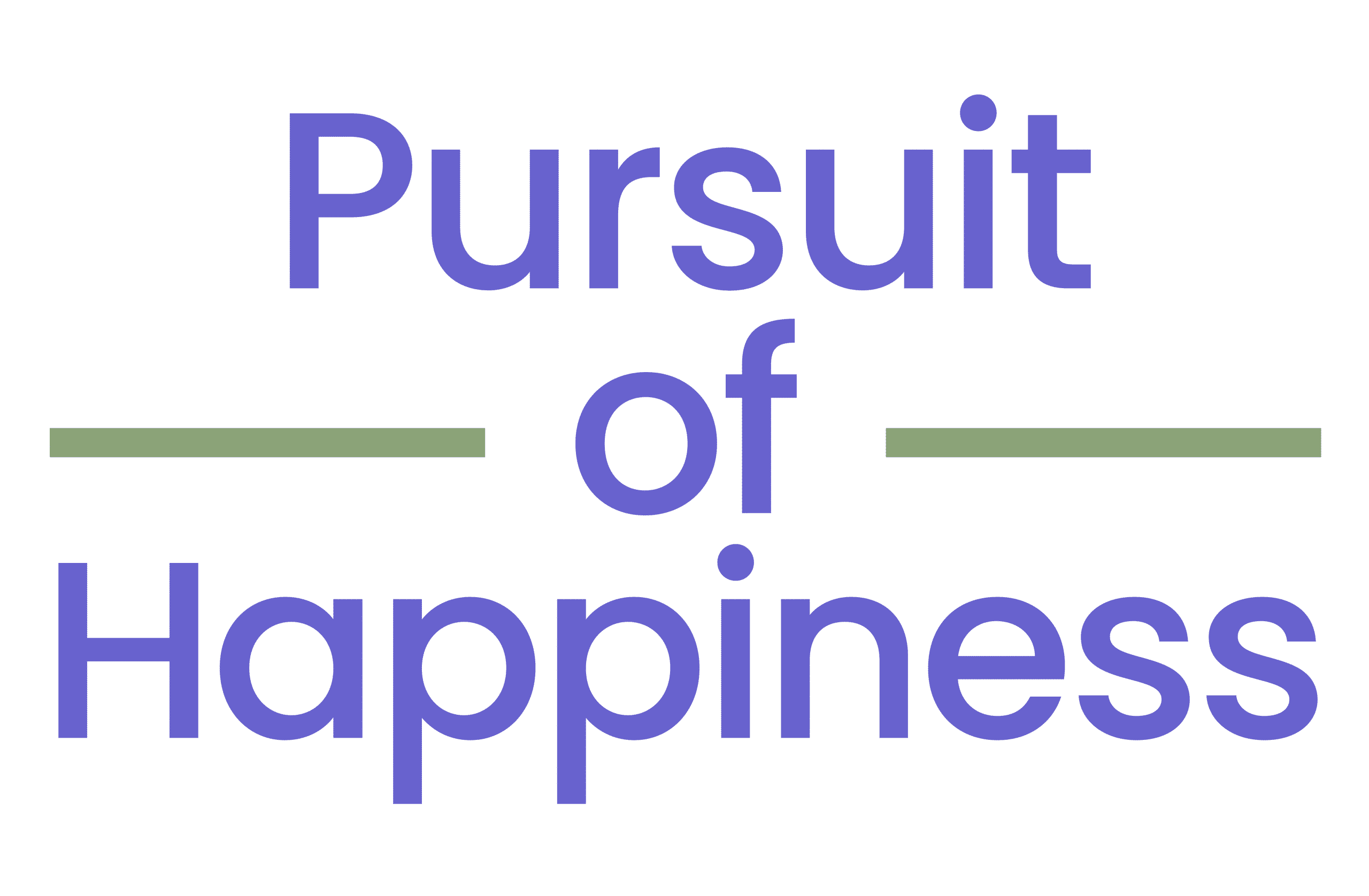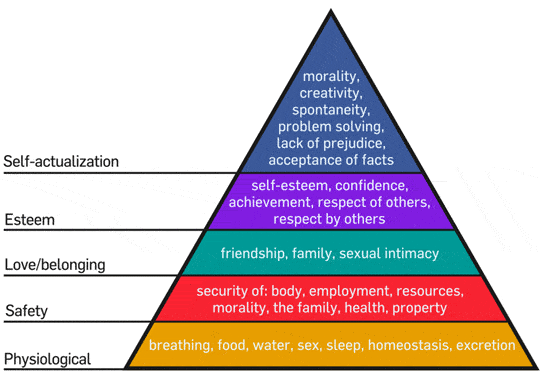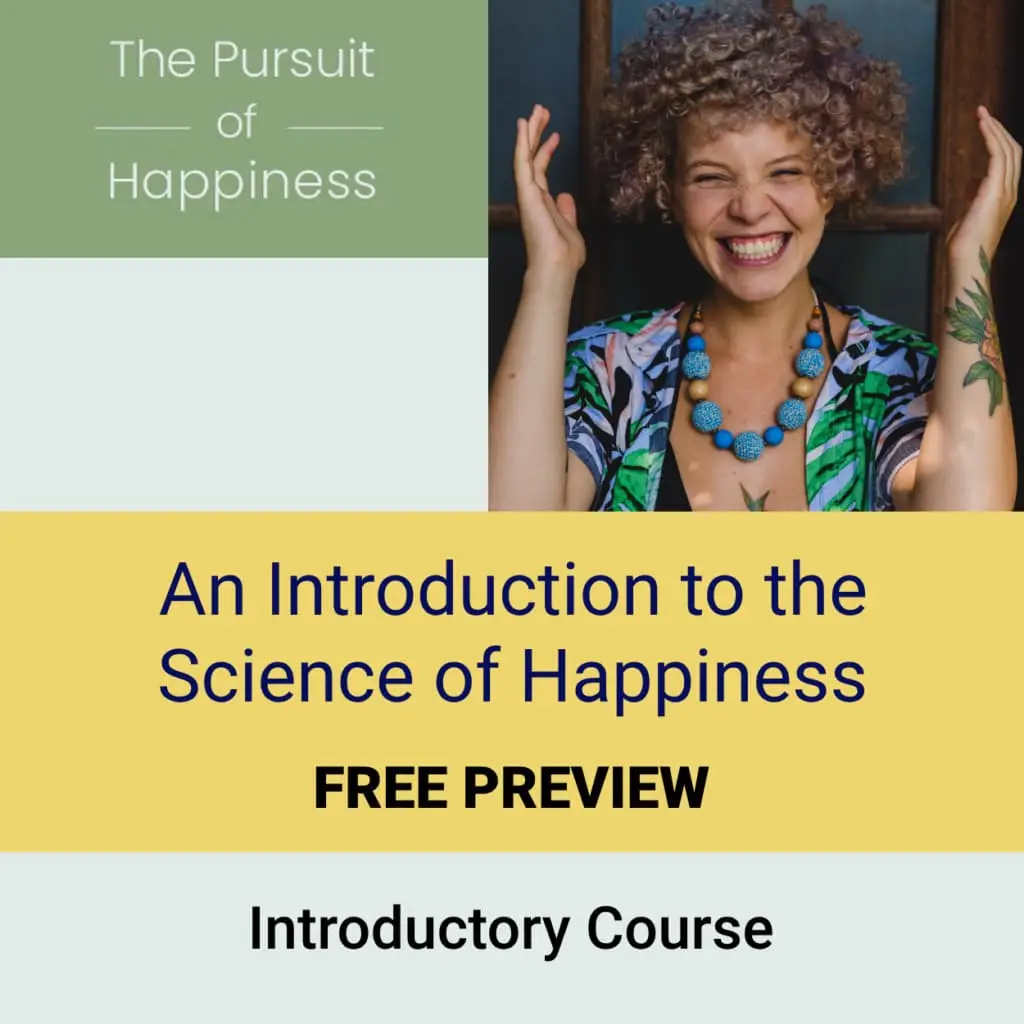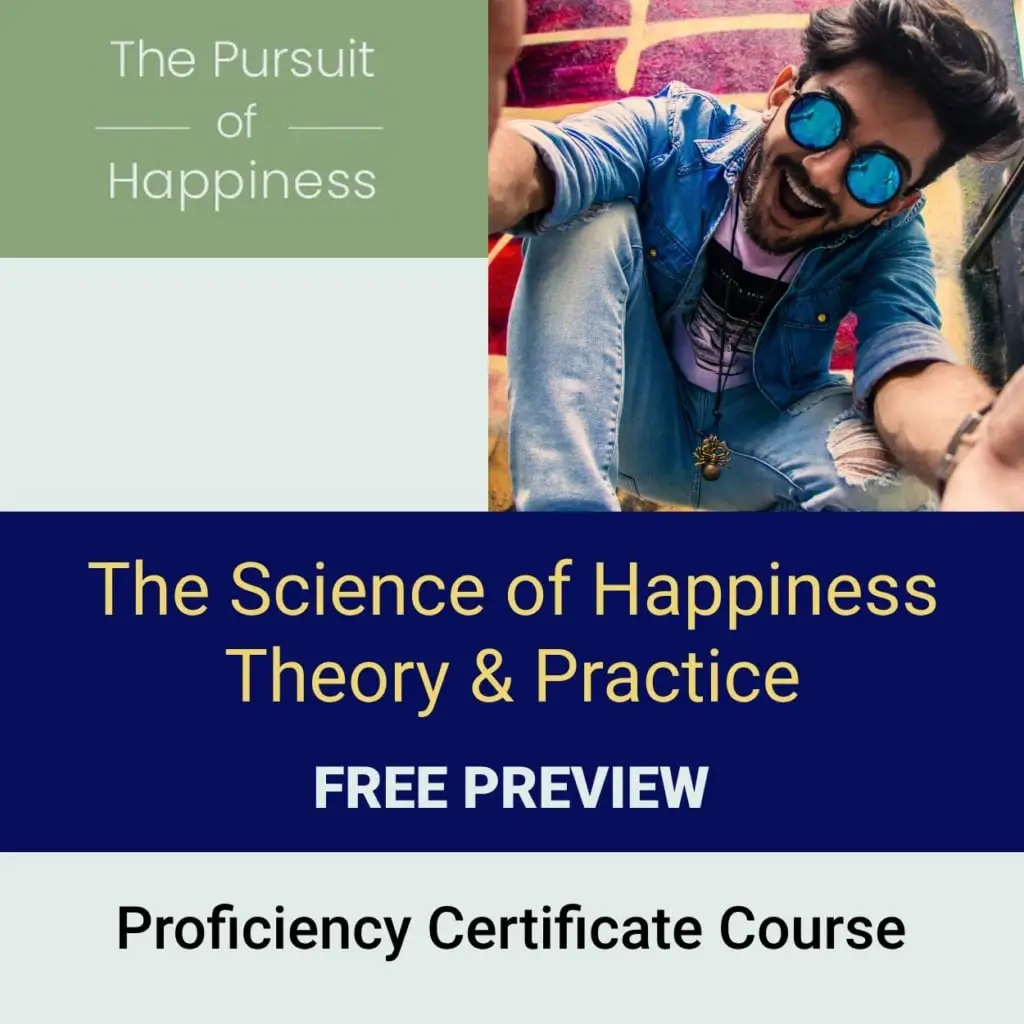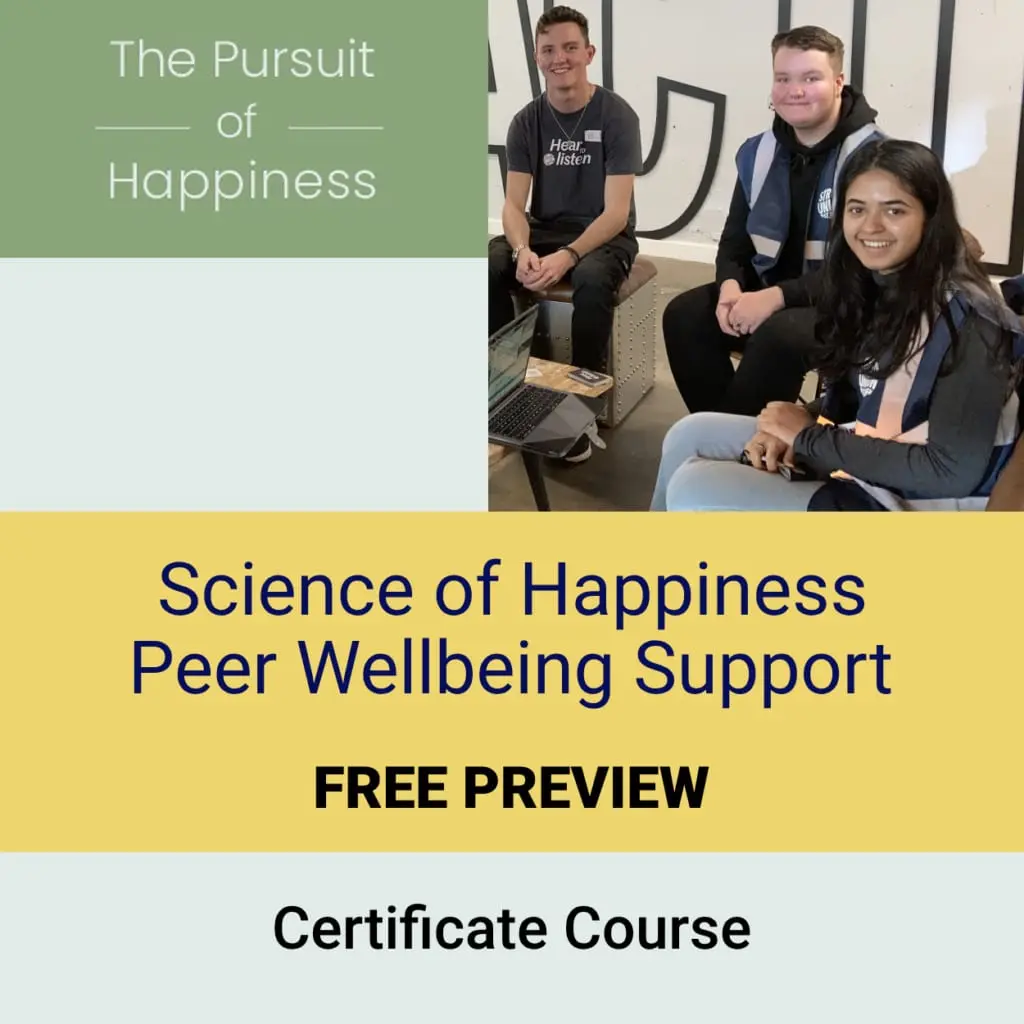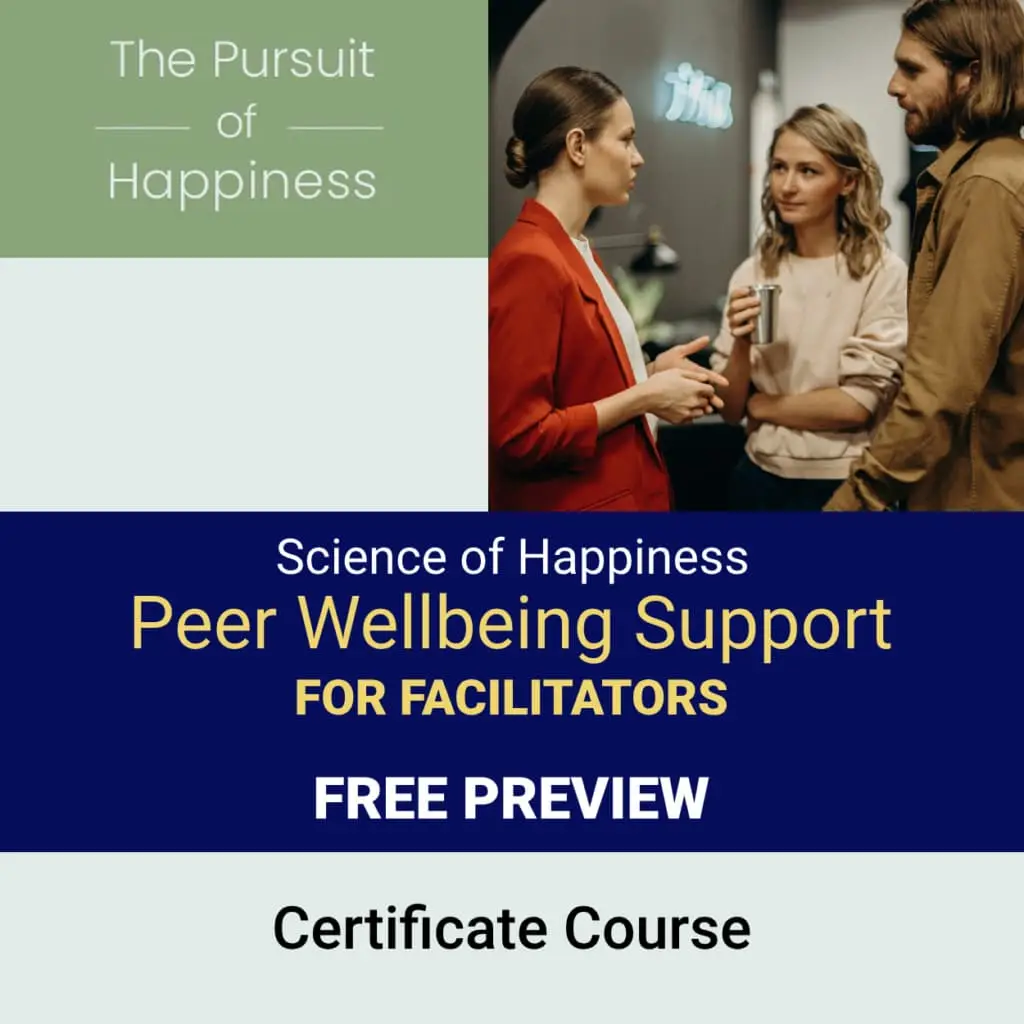“The story of the human race is the story of men and women selling themselves short.”
~ Abraham Maslow
Abraham Maslow's Psychology: Pioneering the Science of Happiness through the Hierarchy of Needs
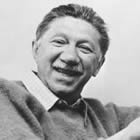
Through his celebrated theory, the “hierarchy of needs,” Maslow succeeds in combining the insights of earlier psychologists such as Freud and Skinner, who focus more on the roots of unhappiness, and the more upbeat work of Jung and Fromm, who insist that the desire for happiness is equally worthy of attention. Inspired by the work of the humanistic psychologists Carl Rogers and Erich Fromm, Maslow insists that the urge for personal growth and self-actualization is deeply entrenched in the human psyche. Nonetheless, in the case of most people, this urge only surfaces once the more basic needs are fulfilled. Once the powerful needs for food, security, love and belonging, and self-esteem are satisfied, a deep desire for creative expression and self-actualization rises to the surface.
Human life will never be understood unless its highest aspirations are taken into account. Growth, self-actualization, the striving toward health, the quest for identity and autonomy, the yearning for excellence (and other ways of phrasing the striving “upward”) must by now be accepted beyond question as a widespread and perhaps universal human tendency … (Maslow, 1954, Motivation and Personality, pp.xii-xiii)
Self-fulfillment and happiness were a central part of his life’s work. In a break from the other experts of his time, he wanted to understand what motivated the great people of history and to understand human potential; he wanted to know what humans are capable of as their healthiest self.
Personal Background
Abraham Maslow’s studies in psychological health and happiness are rooted in a surprisingly sad and frustrated early life. His father was frequently absent physically as well as emotionally while he openly expressed hatred towards his mother, calling her “schizophrenogenic” (schizophrenia-inducing) ignorant, and cruel (Hoffman, 1999, pp. 8-9). He was largely socially isolated as a Jew in a non-Jewish community; and while he was later tested at an IQ level of 195, he found himself on academic probation during his freshman year of college, which he left only to go on to quit law school after a few weeks and Cornell University after one semester (Hoffman, 1999, p. 28). But fortunately for us, a series of experiences redirected the course of Maslow’s life (Hoffman, 1999, pp. 137-139). He gained a sense of purpose, mission and a profound optimism that would color all of his theories and work in many institutions, including Brooklyn College and Columbia University.
Abraham Maslow versus Traditional Psychologies
Like the ideas of Mencius, Maslow’s theories are essentially optimistic about human nature and human possibilities. His theories grew from his intuitive ‘hunch’ that deep down, human nature is good or neutral and not inherently bad or evil.
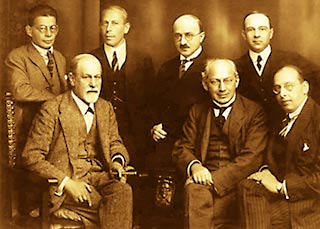
Abraham Maslow thought Freudian psychologists placed too much emphasis on human weaknesses, obscuring a deeper understanding of psychological health. This would be, in some sense, throwing out the baby with the bathwater. He clearly felt that the baby (in this case, human nature) shouldn’t be so easily mistaken for the bathwater (the problem itself). Additionally, he argued that psychoanalysis and its emphasis on neuroses had its place. Yet he intended his studies on happiness and health to complement those of the established schools of psychology. And so he turned his attention towards what he saw as the best and brightest in human history and society in order to determine human potential. From this happy point of departure, we move to highlight some of the many contributions Maslow brings to the pursuit of happiness.
The Hierarchy of Needs
The more we learn about man’s natural tendencies, the easier it will be to tell him how to be good, how to be happy, how to be fruitful, how to respect himself, how to love, how to fulfill his highest potentialities … The thing to do seems to be to find out what one is really like inside; deep down, as a member of the human species and as a particular individual (Maslow, 1987, p. 6).
One of his lasting and most significant contributions to psychology is what he calls the “hierarchy of needs.” In his quest to understand human motivation and the pursuit of happiness, he envisioned a pyramid or hierarchy of five basic human needs that had to be fulfilled for maximum psychological health. Through his interviews and studies, he came to categorize a hierarchical list, a pyramid of needs that need to be fulfilled to achieve what he called self-actualization, or self realization.
Physiological Needs
The Physiological Needs such as breathing, food, drink, sleep, sex, excretion are largely (and obviously) biological and physical requirements. When they are not fulfilled, people become preoccupied with filling those needs above all else. For example, starving people in a war zone can be oblivious to danger when in search of food (Maslow, 1987, pp. 15-17).
Safety Needs
Once the basic needs are fulfilled, other needs invariably arise (Maslow, 1987, pp. 17-18). Within the hierarchy, the safety needs come after the physiological needs. Maslow used the word “safety” to mean more than just physical safety. Economic, social, vocational, psychological security all fall underneath this second tier of human needs. While safety needs are less immediate or demanding than physiological needs, when one loses one’s job, family, home, life savings, health insurance, etc, one is likely to feel terribly insecure and unprotected. Fulfilling the safety needs might be likened to providing a bumper or airbags on a car; while you don’t always need them, having them gives you some confidence that you can face minor bumps and bruises along the road of life (Maslow, 1987, pp. 18-20).
The Need to Love and Belong
As social beings, family, friendships and intimate connections get many people through the ups and downs of life. Numerous studies have shown that the healthiest, happiest people tend to be more involved in their communities. While there is debate on whether one causes the other is unclear, there is some sense that having wider social connections and relationships are an important part of being happy. Lack of interactions, human relationships, and the sense of belonging may result in depression or loneliness while an abundance of love and community often sustain people through difficult times (Maslow, 1987, pp. 20-21).
The Need for Self-Esteem and Self-Love
Abraham Maslow felt there was a clear distinction between love and respect or esteem. He felt that an ability to feel self-esteem and personal uniqueness sprung from being loved and embraced by families and communities. As individuals, we naturally wish to excel or be exceptional, to be noticed for our unique talents and capabilities. Once one has some measure of self-esteem and confidence, one gains the psychological freedom to be creative and to grow as well as to be more generous to others (Maslow, 1987, pp. 21-22).
Concept of Self-Actualization
What a man can be, he must be. This need we may call self-actualization…It refers to the desire for self-fulfillment, namely, to the tendency for him to become actualized in what he is potentially. This tendency might be phrased as the desire to become more and more what one is, to become everything that one is capable of becoming. (Maslow, 1954, Motivation and Personality, p. 93)
The top ‘pier’ of Abraham Maslow’s hierarchy is dubbed “self-actualization.” Maslow studied happy people in order to determine what it was that made them happy or, self-actualized (Maslow, 1987, p. 22).
Abraham Maslow refers to peak experiences as the experience of happiness. He notes above that self-actualized people tend to experience a steadier, grounded sense of well-being and satisfaction with life. According to Maslow, self-actualizing people perceive reality accurately; they have a sense of awe, wonder, and gratitude about life. They are not self-centered but rather problem-centered and focus on how to improve and are not deficiency-centered. They are independent thinkers and are not overly influenced by the general culture. Their sense of humor is not sarcastic or hurtful but rather “life-affirming” with a philosophical sense of humor. They have a deeply felt sense of kinship with the human race.
Self-actualizing people enjoy life in general and practically all its aspects, while most other people enjoy only stray moments of triumph … (Maslow, 1999, p. 37)
Growth Motivations / Needs and Deficiency Motivations / Needs
Growth takes place when the next step forward is subjectively more delightful, more joyous, more intrinsically satisfying than the previous gratification which we have become familiar and even bored (Maslow, 1999, p. 53).
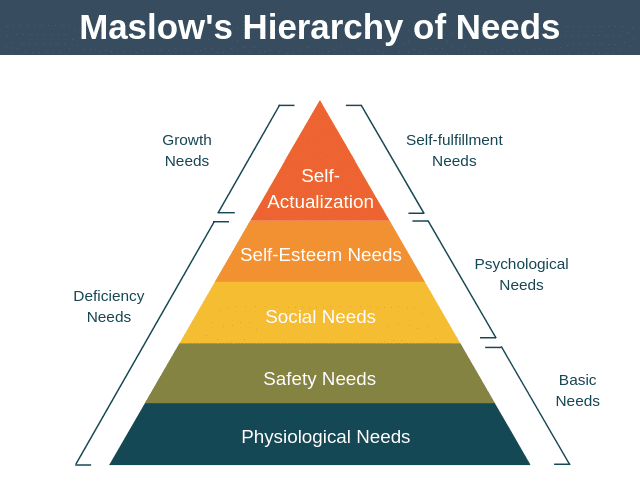
A Few Notes about the Hierarchy of Needs
Abraham Maslow used the term ‘hierarchy’ because, like a pyramid, the higher levels of needs rest upon the foundation of the lower-level needs. Though pyramid shapes are frequently used to visually represent Maslow’s hierarchy of needs it may be more accurate to think of the needs as sitting not firmly atop the lower level of needs but nested inside the previous level. This suggests a much more organic, integrated relationship between each of the different stages. It is important to note that Maslow saw the hierarchy as a general description of a person’s general needs. He points out that the levels are not fixed and that each need does not necessarily need to be fulfilled 100% in order for one to move on to the next level or for someone to feel the pull from the next level of needs. We can be struggling to fulfill our basic physical needs (food, drink, sleep, etc) but still feel a need to pursue stability in our homes and receive love and esteem within our communities. For some, love needs may come after esteem needs, but both are necessary in different ways and degrees (Maslow, 1987, pp. 57-59).
Peak Experiences
Abraham Maslow described peak experience as a “tremendous intensification of any of the experiences in which there is a loss of self or transcendence of [self]” (Maslow, 1970, Motivation and Personality, p. 165). It is a rapturous emotional experience and similar to what religious people might call an ecstatic “mystical experience” where the divisions cease to exist (for example, the division between the head and the heart). Maslow found these peak experiences to be rare and difficult to describe. Their most important contribution is their ability to promote growth and cause one to change in a profound way (Maslow, 1987, p. 138).
Abraham Maslow notes that feelings of intense happiness associated with peak experiences would always be fleeting. In fact, he discouraged people from expecting peak experiences to be anything other than temporary. He seemed to feel that it was only when people accepted this that they were free to settle into personal well-being and happiness. He found that not all self-actualizing people had peak experiences, but noted a higher degree of satisfaction for those who did experience them versus those who did not (Maslow, 1987, p. xxii).
Learn more about the Science of Happiness here!
Mental Illness
Abraham Maslow viewed psychological illnesses as “fallings away from full humanness, from the blooming of human nature” (Maslow, 1973, The Farther Reaches of Human Nature, p. 31) and not as a physical or strictly biological affliction. He suggested, for instance, that neuroses were “related to spiritual disorders, to loss of meaning, to doubts about the goals of life, to grief and anger over a lost love, to seeing life in a different way, to loss of courage or of hope, to despair over the future, to dislike for oneself, to the recognition that one’s life is being wasted, or that there is no possibility of joy or love, etc.” (Maslow, 1973, The Farther Reaches of Human Nature, p. 31). Though he acknowledged the possibility that psychological disorders may have some physical or biological factors, Maslow saw social, educational, political, familial, etc. factors as playing a far greater role.
This view allows Maslow to be optimistic about reversing pathologies and neuroses. In fact, he sees neuroses as preferable to apathy because unlike those who have given up hope, the neurotic person manifests a timid, ineffectual “striving towards full humanness”. He is especially hopeful about being able to restore children back to psychological health by applying his principles of the hierarchy of needs. Simply put, if a child is lacking love, he/she should be surrounded by love. If another is lacking self-confidence, he/she should be shown respect, etc. The point is, for Maslow, psychological illness does not have to happen and if it does, there are ways to reverse its effects or, at the very least, to improve the situation.
Our Related Articles
You might be interested in reading our articles on the following three researchers as they have also made significant contributions to the field of happiness science:
You've gained knowledge of happiness, now let's try to measure it!
Bibliography
Hoffman, Edward (1999). The Right to be Human: A Biography of Abraham Maslow. New York, NY: McGraw Hill.
Maslow, A.H. (1943). A Theory of Human Motivation. Psychological Review, 50, 370-396.
Maslow, A.H. (1964). Religions, Values and Peak-experiences. Columbus, OH: Ohio State University Press.
Maslow, A.H. (1987). Motivation and Personality. (3rd ed.). New York, NY: Harper & Row.
Maslow, A.H. (1999). Towards a Psychology of Being. (3rd ed.). New York, NY: John Wiley & Sons.
Recommended reading:
Maslow, A.H. (1964). Religions, Values and Peak-experiences. Columbus, OH: Ohio State University Press.
Maslow, A.H. (1980). The Farther Reaches of Human Nature (An Esalen Book). New York, NY: Penguin.
Maslow, A.H. (1987). Motivation and Personality. (3rd ed.). New York, NY: Harper & Row.
Picture credit: Illustration of Maslow’s Hierarchy of Needs by Factoryjoe / Wikipedia.
